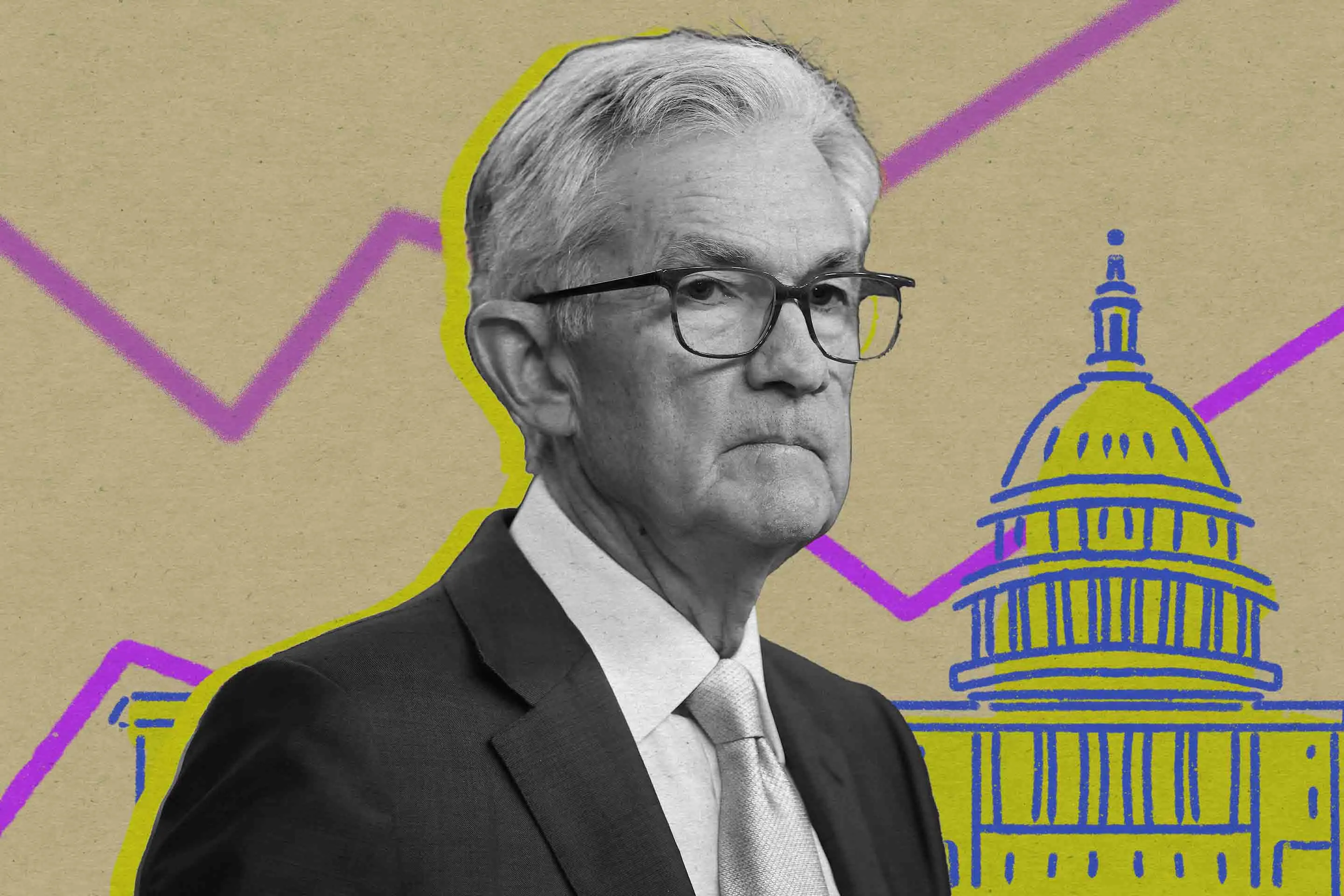 [ad_1]
[ad_1]
After a worse-than-expected jobs report, many economists are worried the Federal Reserve may have waited too long to cut interest rates.
Just two days after the Fed announced its decision to keep rates steady for now, the U.S. Department of Labor released a disappointing July jobs report showing the unemployment rate has ticked up to 4.3%. The economy added only 114,000 jobs, far below estimates of about 175,000 for the month.
“Before I knew the jobs numbers, I thought they should cut,” Sofia Baig, economist at Morning Consult, tells Money. “Now, after seeing the jobs numbers, I'm certain they should have cut.”
The sudden shift in the labor market signals that the overall economy could be on a path toward a recession, though it is far from a guarantee. The Fed said Wednesday that it would like to see more progress toward its goal of 2% before cutting interest rates, but the data has experts calling that decision into question.
Did the Fed miss its chance?
Interest rates are the central banking system's core tool to combat inflation. Higher interest rates can cool an overheated economy by making it more expensive to borrow money. When it’s more expensive to borrow money, people spend less. As a result, employers eventually hire less — or even cut their workforce.
A Fed rate cut, on the other hand, can help stimulate the economy by making it easier for people to borrow money and, in turn, ward off a recession.
Since hiking rates 11 times since March 2022, headline inflation has cooled substantially, falling from its 9.1% peak in June 2022 to 3% in June 2024. But now it appears that the war on inflation is taking a toll on the labor market.
Baig is far from alone in thinking the Fed is behind the curve. Before the July jobs report, it was an open debate about whether the Fed had waited too long to cut rates. Following the report, analysts and economists across the spectrum were in agreement: The Fed should have acted last week.
In a note, Elyse Ausenbaugh, head of investment strategy at J.P. Morgan, said the Fed had been “slightly more hawkish than expected,” adding that “the market reaction to the latest jobs data reflects concerns that the Fed has quickly fallen behind the curve.”
As of Monday morning, markets were down across the board. The Dow Jones Industrial Average slid 2.7%, Nasdaq fell 3.6%, and the S&P 500 was down 3.1%.
“Slowing job growth makes clear that the Fed has waited too long to cut interest rates,” a note from analysts at the left-leaning Economic Policy Institute stated.
What the Fed knew that we didn’t
While the July jobs report surprised many economic experts, it may have not been a surprise for the Fed itself. The central bank’s latest meeting happened to fall two days before the release of the Labor Department’s monthly jobs report, which is not often the case.
Before the public release of each jobs report, the Federal Reserve gets preliminary employment data and estimations of hours worked from the Labor Department two days in advance, the department confirmed to Money. It receives a full report at noon the day before the release.
That means, due to a scheduling quirk, the Fed's board of governors had a glimpse of at least some jobs numbers before announcing its decision to hold rates steady Wednesday afternoon.
Still, that doesn’t come as much consolation to Baig with Morning Consult. She says it’s possible that the Fed is being more hawkish than anticipated because of the pressure to not repeat past mistakes.
She’s referring to the ‘70s and ‘80s when the U.S. last dealt with soaring inflation. The Fed raised interest rates and then quickly lowered them at the first signs price increases were easing. Then, inflation came back with a vengeance, spiking to a peak of 13.5%.
“I think that’s really weighing on them, maybe even more than I suspected,” Baig says.
Will there be an emergency Fed rate cut?
The Fed had signaled its plan to slash rates in September even before the no-good jobs report Friday.
At a news conference announcing the Fed’s decision, Chair Jerome Powell said that an interest rate cut is coming "as soon as the next meeting" if inflation continues cooling. The central bankers next meet in about six weeks, Sept. 17-18.
Analysts were nearly unanimous in expecting a rate cut in September. The jobs report all but confirms it. Now, markets are pricing in a deeper rate cut. According to CME FedWatch, a tool that gauges the likelihood of a rate cut, investors overwhelmingly expect a 0.5 percentage-point rate cut, as opposed to the standard 0.25-point cut.
Some, however, are pushing for cuts before the September meeting, citing sliding stock prices.
“It would be beyond negligent for the Federal Reserve not to announce an emergency interest rate cut in response to the global rout in stock markets,” Nigel Green, CEO of deVere Group, said in a statement urging the Fed to make a 0.25-point cut immediately.
Emergency rate cuts are possible, though uncommon. The last time the Fed made such a move was at the beginning of the pandemic, lowering borrowing costs by a half a percentage point.
However, Baig doesn’t see that happening right now, arguing that an emergency cut may actually be harmful due to the optics.
“A lot of what the Fed does is based on vibes,” she says. “Them getting together and meeting last minute could instill panic that’s not necessary.”
More from Money:
5 Best Stock Trading Apps of 2024
Gold Prices Surge to a New Record High as Stocks Struggle
Olympians Can't Pay Their Bills. Celebrities and Crowdfunding Are Coming to the Rescue


